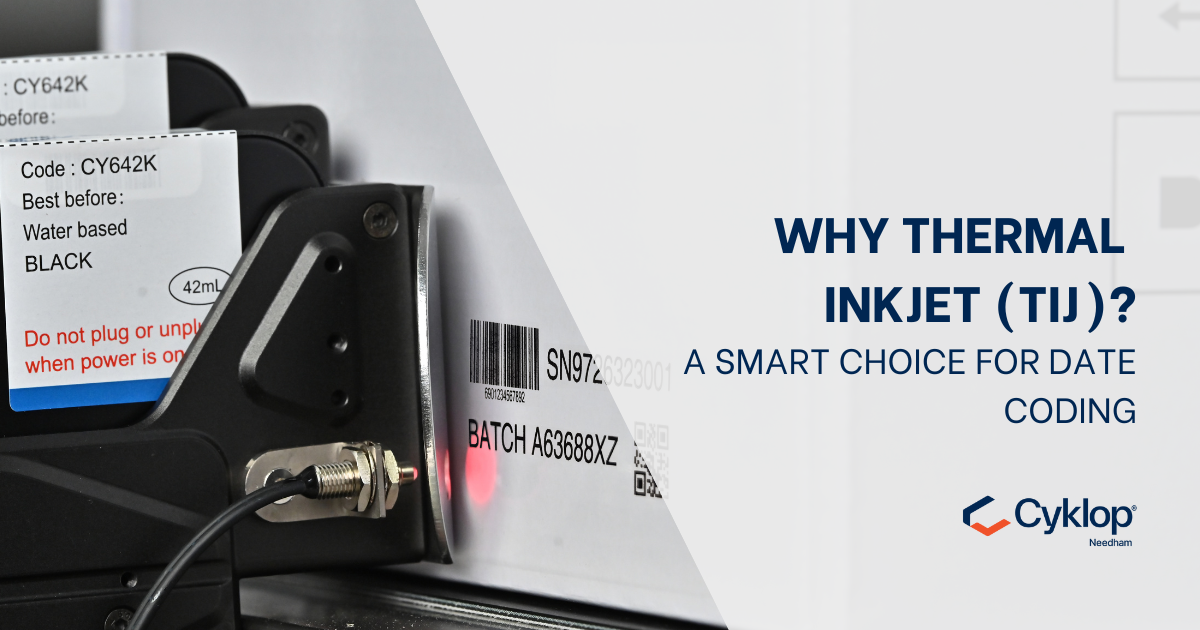Continuous Inkjet vs Thermal Inkjet: Which Batch Coding Technology Is Right for You?
When it comes to batch coding and product marking, manufacturers have a range of technologies to choose from—Laser, Thermal Transfer, Drop on Demand,...
2 min read
Samuel Mcgarrigle
Dec 22, 2021 4:22:33 PM

In the construction sector, traceability isn’t just a regulatory requirement — it’s critical for quality control, safety, and efficiency. From timber and piping to cables, tools, and even chemical labels, coding and marking ensure that every component can be identified throughout its lifecycle.
And while construction may not be the first industry that comes to mind when you think of inkjet printing, it’s one where robust, industrial-grade printing solutions like CIJ and TIJ really prove their worth.
Traceability plays a vital role in:
Ensuring correct material use (e.g., timber grades)
Tracking batches and production dates
Supporting site safety and compliance
Monitoring tool and asset inventory
Meeting EU and UK regulatory labelling standards
As construction projects increase in complexity, reliable on-product coding becomes an essential part of operational accountability and performance.
Graded timber must be clearly stamped with the appropriate code to indicate strength, treatment, and source. These "grade stamps" ensure compliance with UK and European standards, allowing inspectors to confirm that the correct materials have been used on-site.
Inkjet codes on pipes and extrusions provide essential data like batch numbers, material type, and operating temperatures. This isn’t just useful for inventory — it enhances site safety by clearly identifying system contents and handling instructions.
Cable marking typically includes:
Conductor type (CU for copper, AL for aluminium)
Size and number of conductors
Voltage rating
Ground wire presence (e.g. “G”, “w/G”)
Inkjet systems can apply this info directly to the cable sheathing at production speed, ensuring it remains visible throughout the supply chain.
Tool theft and loss are persistent issues on construction sites. Permanent marking with serial numbers or asset tags aids in inventory tracking, ownership identification, and loss prevention.
By 2025, all hazardous mixtures marketed in the EEA must feature a UFI (Unique Formula Identifier) — a 16-character alphanumeric code. CIJ printers can apply these codes legibly and reliably to paint tins, adhesives, sealants, and cleaning agents, ensuring regulatory compliance.
Both Thermal Inkjet (TIJ) and Continuous Inkjet (CIJ) can handle many construction-related marking applications, but your choice depends on the production environment:
Can print without close proximity to the product
Handles non-flat, rough or curved surfaces with ease
Lower running costs on large-scale production lines
Better suited for heavy-duty, dusty or outdoor conditions
Better suited for smaller-scale or mobile setups
Minimal maintenance, with quick cartridge changeovers
Ideal when space is tight or downtime must be avoided
CIJ typically wins in larger, more rugged construction environments — but TIJ remains a strong alternative for lower-volume or precision-focused applications.
Whether you’re marking timber, pipes, cables, or chemical containers, industrial inkjet printing ensures your materials are traceable, compliant, and professionally presented.
At Cyklop Needham, we help construction suppliers and manufacturers integrate high-performance CIJ and TIJ systems into their production processes — supported by expert advice, durable consumables, and OEM-compatible ink solutions.
Ready to upgrade your construction coding strategy?
📞 Call us: +44 (0)1948 662629
📧 Email: enquiries@needham-ink.com
🌐 Website: www.needham-ink.com


When it comes to batch coding and product marking, manufacturers have a range of technologies to choose from—Laser, Thermal Transfer, Drop on Demand,...

What Is a Thermal Inkjet (TIJ) Printer? Thermal Inkjet (TIJ) printing is a non-contact coding method ideal for marking variable data such as expiry...

With CIJ printing, every code or mark must withstand various environmental conditions to ensure readability and reliability. As a leading company in...